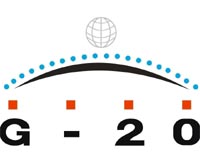 |
Shanghai (AFP) Nov 11, 2010 Clothing retailer Gap opened its first store in China Thursday, calling it a major step in an international expansion aimed at doubling the proportion of its revenue from outside the United States. The firm's 1,140-square-metre (12,300-square-foot) Shanghai flagship is the first of four shops it will open in China in the coming weeks along with an online store, Gap Asia Pacific president John Ermatinger told AFP. "We have looked at our investment in China as the right thing to do for Gap Inc. We have said we are going to take international sales from 12 percent of our total business to 25 percent of our total business," he said. "It's a strategic underpinning and it's a motivation to explore Asia and other parts of the world because that's where the opportunities are." The US retailer, which also operates the Banana Republic and Old Navy chains, is set to open two more stores in Beijing on Saturday, another in Shanghai in coming weeks and one in Hong Kong in the third quarter of 2011. "This is important to Gap... When you look at the sheer size of the country, you look at an emerging middle class and you look at a population who loves brands," Ermatinger said. After gaining a foothold in Shanghai and Beijing, the company plans to extend its reach deeper into China, he said, adding that once the Gap brand establishes a reputation, Old Navy and Banana Republic stores could follow. "We are very bullish about the rest of our portfolio and its appropriateness and its potential in China," Ermatinger said. However, he also acknowledged the company has to learn more about the Chinese market before it can expand. "We always intended to open these initial doors, pause, learn, modify and then grow some more," he said. For its launch campaign "Let's Gap together", the retailer hired photographer Annie Leibovitz to shoot portraits of Chinese and American celebrities including actress Zhou Xun and environmentalist Philippe Cousteau, grandson of ocean explorer Jacques Cousteau. The atmosphere was low-key at the Shanghai store on Thursday morning as customers trickled in, some of them buying special collector's editions of Gap's vintage 1969 jeans for 1,969 yuan (295 dollars). Gap's arrival in China trails far behind competitors such as Japan's Uniqlo, Spain's Zara and Sweden's H&M, which opened their first stores in the country in 2002, 2006 and 2007 respectively. Uniqlo founder Tadashi Yanai, named Japan's richest man by Forbes, has said he hopes to generate one trillion yen (12.2 billion dollars) through his China stores by 2020 and expand the number of outlets to 1,000 from 58 now. Ermatinger said Gap waited to enter the Chinese market because it needed time to build a China management team as well as study consumers and the competitive landscape. For the Chinese market, Gap adapted designs to "Asian-fit" sizes and adjusted prices to range from "accessible to aspirational" with each department offering low-priced items, Ermatinger said. Prices appeared to be comparable to those in the company's US stores, with basic men's khaki trousers selling for 299 yuan. Gap Inc, which posted revenues of 14.2 billion dollars in 2009, now operates more than 3,100 stores in 29 countries, with about a third of them in the United States.
Share This Article With Planet Earth
Related Links Global Trade News
 World union leaders urge G20 to keep promise of decent jobs
World union leaders urge G20 to keep promise of decent jobsSeoul (AFP) Nov 10, 2010 International union groups urged G20 leaders Wednesday to honour a promise to create quality jobs when they meet in Seoul later this week. More than 220 million people are unemployed around the world, the highest level ever recorded and an increase of more than 31 million over 2007, four labour organisations said in a statement. Around 15 percent of the total unemployed had lost their jo ... read more |
|
| The content herein, unless otherwise known to be public domain, are Copyright 1995-2010 - SpaceDaily. AFP and UPI Wire Stories are copyright Agence France-Presse and United Press International. ESA Portal Reports are copyright European Space Agency. All NASA sourced material is public domain. Additional copyrights may apply in whole or part to other bona fide parties. Advertising does not imply endorsement,agreement or approval of any opinions, statements or information provided by SpaceDaily on any Web page published or hosted by SpaceDaily. Privacy Statement |